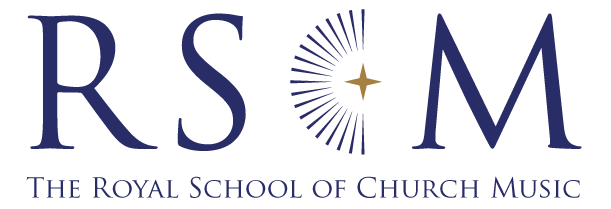Reviews of CDs
* Worth hearing
** Recommended
*** Essential listening
ORGAN CDs
**
MAESTOSO
Callum Alger plays the organ of St Matthew, Northampton ♦ Regent REGCD572
Bairstow’s Prelude in C gets this excellent recital by Callum Alger off to a spirited start. In this short work, the rhythmical clarity of the toccata-like opening semiquavers gives way to a more mellow, section allowing the mighty 1895 J.W. Walker & Sons organ to shine. In a rare outing, Bairstow’s Organ Sonata in E flat is given a powerful rendition. It is clear that this is the music that Alger relishes playing; it raises the question of why we don’t hear more of Bairstow’s organ music. The coupling of organ works by Bairstow and Elgar is an inspired idea. Alger builds the melancholic Maestoso movement to a powerful and shattering conclusion. There is the occasional bit of noise from the mechanics of the organ, but this does not detract from these magnificently mature performances by this young organist. Elgar’s first Organ Sonata brings the disc to a spectacular finale.
Ian Munro
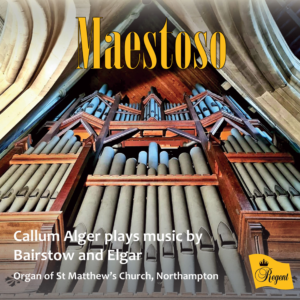
***
LAUS DEO
John Robinson plays the organ of Blackburn Cathedral ♦ Regent REGCD561
This CD marks the 50th anniversary of the J.W. Walker & Sons organ of Blackburn Cathedral, and the four works featured all have associations with the cathedral. The power and might of the magnificent organ is felt from the opening bars of Laus Deo by Jonathan Harvey. John Robinson’s mastery of the score comes across: the punchy, angular rhythms and sudden dynamic contrasts are particularly effective. After the merry-go-round of notes and moods that form Francis Pott’s Introduction, Toccata and Fugue, John Bertalot’s Variations for pedals on Regent Square provide a brief moment of calm for the listener before Percy Whitlock’s Sonata in C minor brings this CD to a stunning conclusion with the final, quiet chord disappearing into silence. Robinson clearly shows his prowess as an organist of exceptional skill in such a demanding programme, while revelling in the might and majesty of the Blackburn organ.
Ian Munro
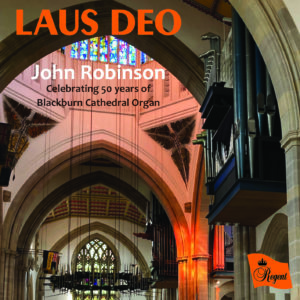
**
CELEBRATION
David Hill plays the organ of St Lawrence, Alton ♦ Herald HAVPCD416
Francis Jackson’s Diversion for Mixtures opens this substantial recital by renowned organist and conductor David Hill. Miniatures by Buxtehude, Lefébure-Wély and Brahms sit alongside Bach’s Toccata and Fugue in D minor, Franck’s Pastorale and Vaughan Williams’s Prelude on the hymn tune Rhosymedre. An illustrious list of luminaries have performed on the Henry Speechly organ at St Lawrence. Hill’s thoughtful, well-chosen programme celebrates the many tonal characteristics the instrument affords. Bach’s ‘Fasch’ Trio in C minor sounds a little underpowered; however, Hill’s use of ornamentation and measured tempo allows the character and the charm of the piece to shine. This recital provides worthy documentation of a much-loved instrument. Langlais’s Hymne d’Action de grâce ‘Te Deum’ and Howells’s moving Rhapsody, Op. 17, No. 1 certainly pack a punch. Lanquetuit’s Toccata en Ré majeur pour Grand-Orgue brings a packed CD to a triumphant conclusion.
Ian Munro
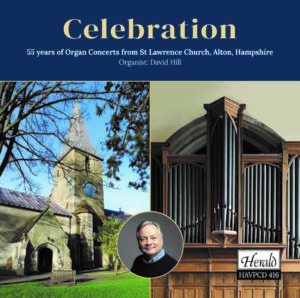
**
IN LONDON TOWN
Benjamin Sheen plays the Dobson organ of St Thomas church, Fifth Avenue, New York ♦ CRD CRD3541
Walton’s March for ‘A History of the English-Speaking Peoples’ gets this disc off to an explosive start. The 2018 Dobson organ is given plenty of opportunity to show its mettle in works including Whitlock’s Fantasie Choral No. 1 and Graham Sheen’s transcription of Elgar’s Cockaigne overture, while Howells’s Master Tallis’s Testament receives a splendid rendition. There are two problems for me. The first is the vastness of the acoustic. The Elegy from Ireland’s A Downland Suite is glorious, as is Judith Bingham’s St Bride, assisted by angels, but the delicate pianissimo passages are swallowed up in the acoustic. The other problem is that, when at the peak of its powers, the organ is just too loud! There’s no questioning Sheen’s skill as an organist – he’s just taken up the post of sub-organist at Christ Church Cathedral, Oxford – but, for this listener at least, both the acoustic and might of the organ impact negatively on these wonderful performances.
Ian Munro
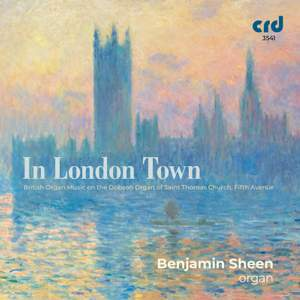
CHORAL CDs
**
REVOICED
Corvus Consort / Ferio Saxophone Quartet / Freddie Crowley ♦ Chandos CHAN20260
Right from the outset, it comes as a pleasant surprise to hear how well human voices blend with the mellow timbres of a range of saxophones. This is especially apparent in Giovanni Gabrieli’s sumptuous O magnum mysterium for two choirs, where we may be familiar with the second choir parts taken by a brass ensemble. How refreshing it is then to hear a saxophone quartet instead and with an unobtrusive sound balance too! Schütz, Andrea and Giovanni Gabrieli, and J.S. and J.M. Bach are represented here with a range of choral motets accompanied by an instrument that had not been invented until long after the baroque era. J.S. Bach’s Sleepers wake! and Jesu joy bring a smile at how well the combination works. Some sonorous contemporary fare explores the relationship between voices and saxophones more deeply. Owain Park’s Miserere after Allegri is a clever reworking of phrases from the original motet, as is Roderick Williams’s Ave verum corpus re-imagined – in this instance William Byrd’s setting. With its mixture of new and old, Revoiced is an apt title for this collection: a fascinating listen.
Stuart Robinson
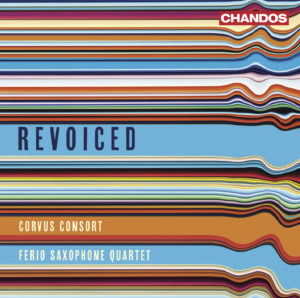
***
EDWARD NESBIT: SACRED CHORAL MUSIC
Choir of King’s College London / Ruby Hughes (soprano) / Joshua Simões (organ) / Joseph Fort ♦ Delphian DCD34256
A CD devoted to the music of a young, relatively unheard-of composer is a big risk; however, this is one which pays off! Edward Nesbit’s Requiem shows his originality as a composer. The text is passed between soloist, the excellent Ruby Hughes, and choir. The soloist reminds me more of a jazz singer, improvising their own melody, distinct from the choir, which sings its own stylistically different music. It makes for an arresting take on a familiar text. The complex textures and harmonies are sung with commendable accuracy by the members of the King’s College choir, who give fine, committed performances throughout. The Benedictus is the most successful movement of the Requiem, in which the complicated polyphonic textures are woven effortlessly in a passage of utter serenity. The subtle, yet vital, organ interjections are performed by Joshua Simões, who gets his own moment to shine in the effervescent Fanfares and Rounds.
Ian Munro
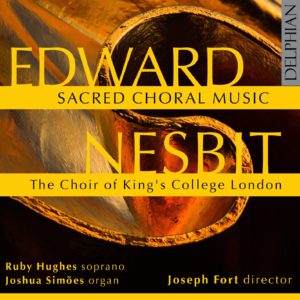
***
THE PSALMS
Choir of St John’s College, Cambridge / James Anderson-Besant, Glen Dempsey & George Herbert (organ) / Andrew Nethsingha ♦ Signum Classics SIGCD721
The singing of psalms is an integral part of evening choral services in both the Anglican and Catholic traditions. A lot of nonsense has been uttered about choral evensong in particular being akin to a concert, the proponents forgetting that for both musician and hearer alike, striving for perfection might just be an expression of God-given talent and/or faith. This CD might rekindle that debate, but so what: here is Anglican chant at its perfect best!
All 13 psalms are sung in harmony throughout, but there is plenty of contrast. Take the dramatic declamation of Psalm 76, ‘In Jewry is God known’, sung to Robert Ashfield’s powerful triple chant. By contrast, time stands still in the heartrendingly penitential Psalm 88, ‘O Lord God of my salvation’, sung to a chant by William Prendergast. With clear diction, unhurried chanting, sensitive phrasing and perfectly balanced choral singing, this is the sort of psalm singing many choir directors would crawl over broken glass to achieve. The accompanying booklet has a range of excellent articles.
Stuart Robinson
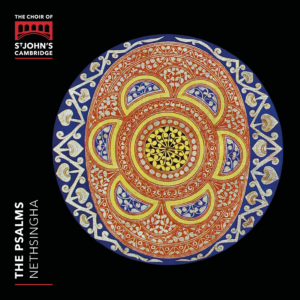
**
LUX AETERNA
Gesualdo Six / Owain Park ♦ Hyperion CDA68388
Ever since its foundation by Owain Park in 2014, this all-male sextet has gone from strength to strength. Lux Aeterna is their sixth CD. Following the pandemic this collection is timely and is reflective in mood. It explores ancient and modern musical responses to mourning and loss. Tallis, Byrd, Morales and Purcell (Thou knowest, Lord, the secrets of our hearts) are interspersed with works from Neil Cox, Howard Skempton, Eleanor Daley, James O’Donnell and Joanna Marsh. Mention must be made of John Tavener’s Funeral Ikos performed with the same effortless poise and sense of line as I heard in their live concert in Salisbury Cathedral earlier this year.
The centrepiece is Owain Park’s own Sequence: In Parenthesis, an atmospheric setting of a WWI poem by Welsh poet and artist David Jones. The narration is threaded with a range of contemporaneous tunes and some Welsh ditties such as Sosban fach! This is an excellent CD, recorded by the same audio engineer and producer (David Hinnitt and Adrian Peacock respectively) as the Revoiced CD reviewed above.
Stuart Robinson
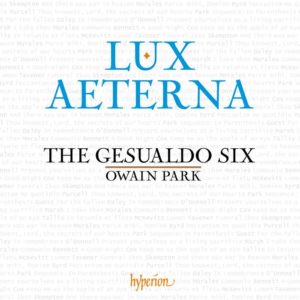
***
MISSA FESTIVA: CHORAL MUSIC BY FLOR PEETERS
Choir of Royal Holloway / Onyx Brass / Matthew Searles & George Nicholls (organ) / Rupert Gough ♦ Ad Fontes AF008
Flor Peeters (1903–86) is probably best known as an organist and composer of organ music. This beautifully packaged CD of his choral music is a welcome addition to the library. The dramatic Entrata Festiva gets this recording off to a spirited start. Brass, choir and organ are perfectly balanced and instrumentalists accompany the choir most sensitively. It sets the listener up for a special journey of some quite exquisite music. With powerful (but not overpowering) brass contributions sitting alongside the composer’s familiar traits of long pedal notes, parallel fourths and fifths as well as the evocation of medieval plainchant, the Missa Festiva is an exciting, dramatic but moving setting of the Mass. The a cappella singing in the Credo is especially beautiful. It is wonderful to hear some hauntingly beautiful miniatures, including settings of Tantum Ergo and Ave Maria. The Missa in Honorem Sancti Josephi receives an equally committed performance. Highly recommended.
Ian Munro
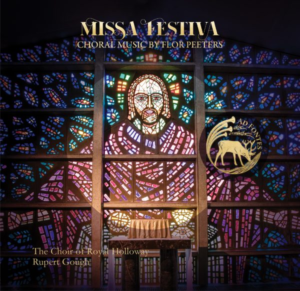
CONTEMPORARY CHRISTMAS
**
ALL THE WORLD TONIGHT REJOICES
Truro Cathedral Choir / Andrew Wyatt (organ) / Christopher Gray ♦ Regent REGCD560
This exceptional carol album is all the more remarkable given that it was embarked on under social distancing conditions in May 2021, although not released in time for review here last year. The story of the start of the Nine Lessons and Carols tradition in Truro in 1880 is frequently told. Less widely known is that, since 2003, each service has included the premiere of a newly commissioned carol. If King’s took the idea of Nine Lessons and Carols from Truro, Truro may be said to have taken the idea of an annual commission from King’s. Eleven of these commissions are included on the disc, along with six further recent carols (or recent arrangements) and two organ pieces. Eight of the tracks are first recordings.
There are well-established composers, such as Judith Weir with Illuminare, Jerusalem (a 1985 King’s commission) and Gabriel Jackson with Nowell sing we (a 2006 Truro commission). The youngest composer is Helena Paish, born in 2002, whose While Mary slept contrasts girls’ voices singing of Mary’s joy and lower voices singing of the pain to come. Throughout the CD, the carols alternate boy choristers (nine tracks) and girl choristers (eight tracks), singing along with the lay vicars and choral scholars. There are many cases of well-known words given completely new music. Among the smaller number of arrangements of the expected tune is Gary Cole’s unaccompanied treatment of Away in a manger in which the singing, with boys’ voices, is particularly fine. For a first recording after lockdown this was an ambitious undertaking, but carried off with outstanding success – it is a disc to which I shall return with pleasure, and not only at Christmas.
Judith Markwith
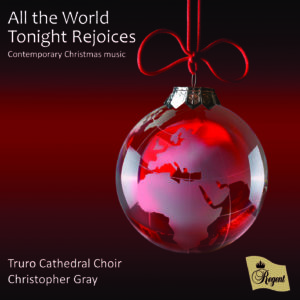
BOOKS
AT THE ORGAN OF NOTRE-DAME
Olivier Latry and Stéphane Friédérich
Dr J. Butz 156pp. PB 978-3-928412-32-2 €15.00
Acclaimed worldwide (and on YouTube) for his astonishing improvisations and organ recitals, Olivier Latry is nonetheless a committed and deeply spiritual church musician. He has been co-titular of Notre-Dame de Paris since his appointment in 1985 at the remarkably young age of 23. Although presented here as a series of conversations with French music journalist Stéphane Friédérich, this book is essentially the autobiography of a humble servant of God, masterfully and fluently translated by Martin Setchell.
In addition to his life story, Latry discusses the organ at Notre-Dame and his relationship with it – this all written after the disastrous fire at the cathedral. One surprise, considering his current reputation, is to learn that Latry did not enter the world of organ improvisation early or easily, but rather reluctantly and out of liturgical necessity. Topics discussed include the performance of French repertoire old and new, much about his teacher and mentor Gaston Litaize, thoughts on organ design, the philosophy of music in general and the work of a Catholic liturgical organist. This latter subject, revealing his deep Christian faith, gives insights into a French church musician’s work that are especially interesting; I learnt a great deal from these conversations.
One quotation is worth repeating: ‘Playing a service and playing a concert really have opposite goals. In a service the organ is playing for a group of people, most of whom are believers. Music touches their souls to reach their hearts. In a concert, it’s the other way round; the performer touches the audience’s hearts to lift their souls …’ I cannot recommend this book too highly.
John Henderson
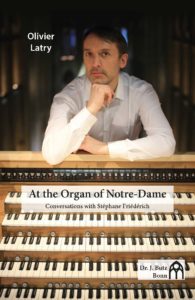
Reviews of printed music
CHORAL MUSIC
E Easy
M Medium
D Difficult
EASY ANTHEMS
JESUS, TO YOUR TABLE LED [E]
Christopher Maxim
SATB and organ
Paraclete Press (RSCM) PPM02034M £1.50
BLESSED ARE THE PEACEMAKERS [E]
Will Todd
SATB and piano
Boosey & Hawkes BH134595 £3.25
Christopher Maxim’s anthem is an excellent demonstration of simple writing for maximum effect. Over half the anthem is unison or in two parts (including two-part mixed voices), well supported by the organ. The original hymn text (found today in very few hymn books) has seven 3-line stanzas, and Christopher Maxim sets four of them, ending with a reference to the Agnus Dei, ‘Lamb of God, grant us your peace’. It is recommended for small choirs wanting a new easy communion anthem.
In Blessed are the peacemakers, Will Todd sets Matthew 5.9 over an atmospheric piano part with lyrical vocal lines that repeat sufficient material to make it straightforward to learn. There is occasional divisi, easy to pitch. Hauntingly beautiful and with a contemporary feel, it encourages engagement with the words by choir and congregation.
James L. Montgomery
CHRISTMAS UPPER VOICES
DING DONG! MERRILY ON HIGH [E/M]
arr. Olivia Sparkhall
SS (with divisions) and piano
Banks Music Publications KCS011 £1.95
IL EST NÉ LE DIVIN ENFANT [E]
arr. Gabriel Fauré
Unison voices and piano
Bärenreiter BA25152 £3.00
Ding dong! has a spritely arrangement by Olivia Sparkhall that will make an audience smile and be fun for a choir to learn. It really is ‘SS’ – both parts exchange musical material, including top G sharps.
It is a surprise to find a Fauré organ accompaniment for Il est né, but it is delightful. Offprinted from the Fauré complete edition, the words and tune are as we know them, but not the harmonies. A tonic pedal until the final verse gives as rustic a feel as Fauré is prepared to allow, with more sophisticated harmonies to finish.
Stephen Patterson
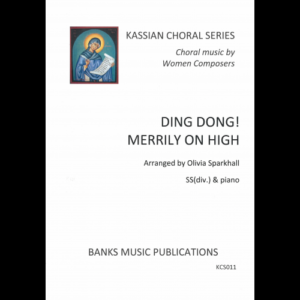
ADAM LAY YBOUNDEN [E]
Tamsin Jones
Unison voices and piano
Tim Knight Music TKM874 £1.60
CORPUS CHRISTI CAROL [D]
Richard Peat
Three-part upper voices
Encore Publications 020700 £1.95
Adam lay ybounden is given a rumbustious treatment, marked ‘Con brio’ and far removed from some reflective settings we are used to. It has urgency in its rhythms and accents, and in the busy piano part. ‘The apple taken was’ is twice sung fortissimo – the mood is that of the joyful ‘Deo gratias!’.
Richard Peat’s Corpus Christi Carol, by contrast, is marked ‘Espressivo (sempre guidata dalle parole)’ and is tightly constructed, with 13 short sections contrasting canonic writing with expressive parallel-motion passages and others with three-part chords all centred round E minor. The climax at ‘Corpus Christi wretyn theron’ is shattering.
James L. Montgomery
CHRISTMAS MIXED VOICES
ORATORIO DE NOËL, Op. 12 [M]
Camille Saint-Saëns
SATB choir, soloists and organ
Bärenreiter vocal score 11304-90 £12.00
The ‘Christmas Oratorio’ written by the 23-year-old Camille Saint-Saëns (1835–1921) has been well served by printed vocal scores. The latest Bärenreiter one, accompanied by full score and orchestral parts, appears 20 years after the previous Bärenreiter score (BA7514) that had a three-stave organ accompaniment. This new score has much the same musical text as most others – the piano reduction is based on that by Saint-Saëns’s pupil Eugène Gigout, as was the original Durand edition. However, there is a good preface by Christina Stahl that outlines the history of the work that Saint-Saëns expanded from six to ten movements, and also a useful guide to the French pronunciation of Latin that was standard up to Pius X’s 1903 motu proprio; choir directors may find this useful in respect also of Fauré’s other sacred music.
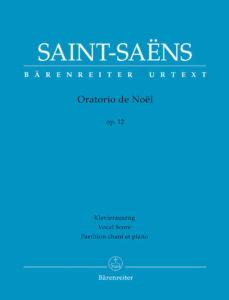
LE VERMEIL DU SOLEIL [M]
arr. Richard Elfin Jones
SATB and organ
Encore Publications 020713 £2.50
This is an attractive arrangement of a little-known French carol, given here with one verse of French words followed by two of English. The lively organ part dominates the first verse and has an introduction and links between verses, and a final musical exclamation while the choir holds the last chord. The second verse is unaccompanied, harmonized more chromatically; the third verse includes a rather wild soprano descant. The whole arrangement is full of enjoyment.
MOONLESS DARKNESS [E]
Amy Beach adpt. Simon Jackson
SATB
Encore Publications 020707 £1.95
When welcoming Olivia Sparkhall’s adaptation for upper voices of With prayer and supplication by Amy Beach (1867–1944) in Sunday by Sunday 101 (June 2022), I wondered why the original version of the anthem for SATB was not also published. Six months later, from a different publisher and different editor, here is the SATB version, except that, although the complete scoring is now provided, this time the words have been removed and replaced by Gerard Manley Hopkins’s Christmas poem – the editor has had to compose 10 extra bars in the middle to make it fit. It is undeniably effective and would be a lovely alternative to a well-worn carol at midnight.
HAIL, SACRED DAY [E/M]
Thomas Merritt arr. Jonathan Bielby
SATB and organ
Encore Publications 020712 £2.95
Cornishman Thomas Merritt (1863–1908) wrote carols and anthems that are still sung, especially by male-voice choirs, in Cornwall and far beyond. Hail, sacred day is one such, but here presented in a different way. One realizes that all is not going to be as expected when verse 2 is introduced by the ‘Pastoral Symphony’ from Messiah and then by ‘The Shepherds’ Farewell’ from L’Enfance du Christ. So it continues, culminating in a bluesy tuba solo that launches the final verse. This is not for your conventional carol service, but a choir at a Christmas concert could have enormous fun with it.
Stephen Patterson
LENT
TEACH ME YOUR WAY, O LORD [E/M]
Randall Svane
SS and organ
Encore Publications £1.95
This is a wonderfully atmospheric approach to just a single verse of words from Psalm 86. The equal soprano parts take it in turns to lead with a flowing tune, followed by a passage in thirds and then in imitative counterpoint – the second time with a forte climax on ‘I will walk in your truth’. The organ sustains added-note chords and unobtrusively supports the voices.
SICUT CERVUS [D]
Phillip Faber
SSAATTBB
Wilhelm Hansen WH33174 £3.99
One of Denmark’s leading choral conductors, Phillip Faber writes music that is rewarding for singers to rehearse and perform. His Latin-texted setting of Sicut Cervus (‘Like as the hart’), ‘written as a comment on Palestrina’s masterpiece’, depicts the flow of the water-brooks in rocking quavers, but is more concerned (as was Palestrina) with the spiritual yearning described in the first two verses of Psalm 42, and also despair and doubt as ‘My tears have been my meat day and night’. The final cry of ‘Where is your God?’, sung to a dramatic crescendo, only partially resolves on an open fifth. It is a powerful setting.
Stephen Patterson
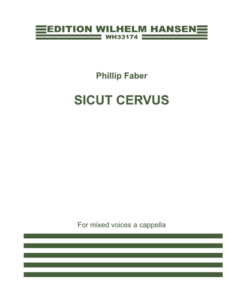
SOPRANOS, ALTOS AND MEN
CORONA MASS [M]
Walter Gleissner
SAMen
Edition Dohr (Universal Edition) 20305 £8.50
Walter Gleissner continues to write prolifically into his 90s, with church music that is always intended to fill a need. This Mass setting is named after St Corona, a saint turned to in times of pestilence in Bavaria, Austria and northern Italy, and the setting was written in response to the corona pandemic. Aware of the reduced size of many church choirs once singing was allowed again, Gleissner wrote an unaccompanied setting including just a single line for male voices. Kyrie, Gloria, Credo, Sanctus and Agnus Dei are all included. Largely chant-based, the music mixes counterpoint and homophonic writing to provide variety, with vocal lines that avoid extremes of range and have a natural flow.
James L. Montgomery
ORGAN MUSIC
E Easy
M Medium
D Difficult
CHRISTMAS ORGAN MUSIC
GOLD, FRANKINCENSE AND MYRRH VOLUME 1 [M]
edited by Ian Tracey and Keith Harrington
Church Organ World COW-2021-011 £20.00
Despite the title, there is no Epiphany music in this volume, but instead 11 varied and useful Christmas voluntaries, mostly based on well-known carol tunes. Ian Tracey opens with a quiet version of Irby that would make an effective mood-setter at the start of a service. At the end of the 60-page volume is Christmas, Matin How’s joyful survey of nine different carols, also ending reflectively. In between are contributions from Keith Harrington, Daniel Bishop, Stephen Barber and Stephen Burtonwood, whose O holy night twice rises to a grand climax. It contrasts with the gentle nature of the other pieces, based on Cradle song (‘Away in a manger’), Cranham, Coventry Carol, Herefordshire Carol (‘This is the truth sent from above’), Hermitage (‘Love came down at Christmas’) and Stille Nacht, as well as two free-form pieces with a Christmassy spirit.
EUROPEAN CHRISTMAS SONGS [E]
Lothar Graap
Edition Dohr (Universal Edition) 20269 £9.50
Carol melodies from 11 different countries are presented, each with between two and four variations followed by a repeat of the opening theme. Everything is simple and frequently charming; pedals are used infrequently in the variations. Many organists would enjoy playing a number of these ‘chorale partitas’, as the composer calls them, during the Christmas season. But what a pity the carols are only identified by their German titles! English speakers will recognize ‘Away in a manger’ in the melody of the piece entitled ‘Im Stall in der Krippe’, and, if they know their French carols, may recognize ‘Entre le boeuf et l’âne gris’ in ‘Dort zwischen Ochs und Eselein’, but, in a volume featuring 11 different carol traditions, it would be helpful to identify the original titles.
THE WORD MADE FLESH [M]
Timothy Rogers
Encore Publications 010035 £8.95
This piece draws its inspiration from John 1.14, starting ‘And the Word was made flesh, and dwelt among us’. The letters of WORD, GOD and JESUS are translated into note names by a cypher system. If that sounds reminiscent of Messiaen, so is the juxtaposition of contrasting blocks of material, although the sound-world is utterly different. The notes of WORD and GOD both comprise seconds and fourths, which dominate the work. As well as these sharply delineated motifs, a further musical reference is provided by the opening phrase of Corde natus ex Parentis, ‘Of the Father’s heart begotten’, which appears in the pedals from time to time, and emphatically in the final bars. The composer provides a detailed theological commentary, but it is a work that also makes satisfying musical sense in its own terms.
Julian Elloway
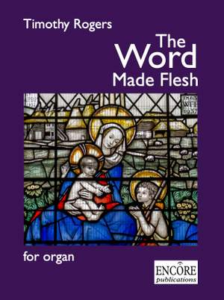
MANUALS ONLY
LEICHTE ORGELWERKE VOL. 2 [E]
Louis Lefébure-Wély ed. Hans-Peter Bähr
Dr J. Butz BU3035 €15.00
These 35 easy pieces are all selected from La Sainte Chapelle, two volumes containing the final compositions of Louis Lefébure-Wély (1817–69) for organ or harmonium. They might be used liturgically as prelude, postlude, meditation or interlude, and are grouped by key, which helps the choice if they follow or precede a hymn. The majority are simply titled Verset, while those with more specific titles, such as Offertoire, Communion or Bénédiction, seem equally appropriate for general use. These short pieces (between one and four pages each) are mostly restrained and melodic, sentimental and heartfelt perhaps, but well worth playing.
Duncan Watkins
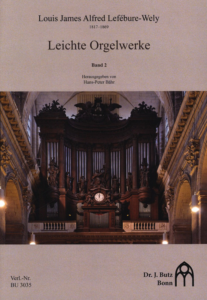
VOLUNTARIES (WITH PEDALS)
INVOCATION & PAEAN [M/D]
PRELUDE & FUGUE [M/D]
Christopher Maxim
Paraclete Press PPM02153M £9.00 and PPM02154M £9.60
These publications demonstrate once again that Christopher Maxim has a deep sympathy for the organ and composes music that is literate, practical, stylish and engaging. The title Invocation & Paean immediately plants a Leighton-esque sound-world in the listener’s mind and, sure enough, the music is shot through with the expected astringent harmonies and energetic angularity, though there is also a more generous, quicksilver quality that is immediately engaging. The Prelude & Fugue is characterized by irregular time signatures: the former in a driving 7/8 and the latter generally in a surprisingly effective and entertaining 13/8. This is fun, joyful music that, with a steady hand and imaginative ear for registration, should delight listener and performer.
Huw Morgan
REINHEIM ORGAN BOOK [mostly M]
Bernd Genz
Edition Dohr (Universal Edition) 20352 £18.95
This is a useful collection of 10 voluntaries written over a period of 24 years, some chorale-based (including Aus tiefer Not, Heut triumphieret Gottes Sohn and Resonet in laudibus); others are fugues preceded by a prelude, fantasie or introduction. There is also a set of four highly contrasting variations. The music is full of character and interest – and mostly of moderate difficulty, despite a surprising amount of double pedalling in octaves that seems unnecessary with suitable pedal registration.
MARCHE MILITAIRE, Op. 34 [M]
SONATA NO. 1 IN E FLAT, Op. 3 [D]
Percy Buck ed. David Patrick
Fitzjohn Music Publications £7.00 and £10.00
Probably best known to organists today for his hymn tune Gonfalon Royal, Sir Percy Buck (1871–1947) also wrote three organ sonatas and a small number of other pieces. These include a Marche militaire, dating from when he was just 21. The opening theme, propelled by an active pedal line, has a melodic motif that continues in the short trio section. Its conventional harmonic language is enlivened by the occasional unexpected chord or progression. As a voluntary, it would provide a triumphant end for a joyful service.
The first Organ Sonata was written four years later, despite its much lower opus number. A stirring maestoso theme, rising over nearly two octaves, frames the first movement (‘Fantasie’) and returns at the end of the final movement, an Introduction and Fugue. The centre movement is a theme with four imaginatively transformed variations plus coda. It is a substantial 20-minute work that travels down unexpected harmonic and melodic paths while maintaining a sense of direction, so that the final reprise of the opening feels as if the music has reached its goal.
FIVE REFLECTIVE PIECES [E]
Charles Quef ed. David Patrick
Fitzjohn Music Publications £8.00
Charles Quef (1873–1931) was titulaire at La Trinité in Paris in succession to Alexandre Guilmant. This edition combines the first three of the four pieces of Quef’s Op. 37 (omitting the final Festal March) with the first two pieces of his Five Recital Pieces, Op. 28. There is a wistful yearning pervading all the pieces, even the major key ones, at its most intense in the final Lamento, effective when that sort of mood setting is appropriate. Perhaps David Patrick will round out our picture of Quef’s music with the four omitted pieces in a ‘non-reflective’ volume.
MARTIN HOW AT 90 [mostly M]
Martin How
Church Organ World COW-2021-011 £20.00
Compiled and published shortly before his death, this is a timely reminder of Martin How (1931–2022) as a composer for the organ. The first two pieces are entitled Edwardiana, and as he writes, ‘the style tends to look back, but this is surely permissible in one’s later years.’ The 15 pieces are mostly meditative, The last two pieces, however, are very different, with a powerful Glory through strife that slowly progresses above descending pedal semiquavers to a strife-torn climax before calm returns. Finally, there is the exhilarating Thanksgiving that How wrote to mark the restoration of the Croydon Minster organ – his premiere of the piece is well worth a listen on YouTube.
Duncan Watkins
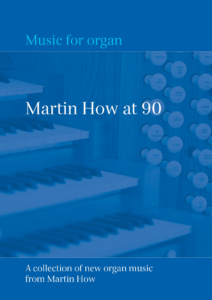
ARRANGEMENTS AND TRANSCRIPTIONS
NYMPHÉAS Op.54 [D+]
Marcel Dupré
Original version and adaptation by Tobias A. Frank (first print)
Dr J. Butz BU3033 €32.00
Marcel Dupré (1886–1971) had a love of impressionistic painting (especially Monet’s water lilies), which inspired him to compose Nymphéas in 1958–9. It was written specifically for the technical and sonic possibilities offered by his house organ in Meudon, meaning that it has only ever been possible to perform it on this instrument, which is why the music has remained unpublished for so long. Rolande Falcinelli wrote in an essay: ‘The boldness, the novel natures of his understanding of the organ, which reflected in this composition, gives the organ a multicoloured palette of sounds and would surely have attracted the attention of a Debussy or a Ravel.’
The adaptation by Tobias Frank for a standard instrument realizes Dupré’s carefully worked-out sound-world, with some minor changes. It is also accompanied by the original score in this beautifully produced volume, allowing the performer to compare the two. Nymphéas is a difficult but fascinating work, which should certainly be explored by more adventurous organists.
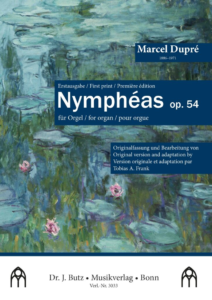
THREE PRELUDES [M]
George Gershwin arr. Kiyo Watanabe
POLOVTSIAN DANCES [D]
Alexander Borodin
arr. for organ duet by Kiyo Watanabe
Trumph – T074025 £14.50; T074016 £19.50
These two new arrangements represent just a small number of organ transcriptions from the desk of Kiyo Watanabe. The Three Preludes by George Gershwin form a miniature suite, which allows the organist to explore different colours and textures. The ‘Polovtsian Dances’ from Prince Igor by Alexander Borodin, which have been arranged for organ duet, are more complicated technically and would require two organists of good technical ability who know each other well, in order to negotiate some of the complex rhythmical and technical issues that this piece presents. They are both published with wire binding, making them easy to use at the console.
Other arrangements by Kiyo Watanabe for solo organ, recently published by Trumph, include:
Wilhelm Stenhammar: Three Fantasias Op.11
Alexander Scriabin: Andante from Symphony No.2 Op.29
Pyotr Ilyich Tchaikovsky: Serenade for Strings Op.48
Pyotr Ilyich Tchaikovsky: The Sleeping Beauty Op.66a
SYMPHONY IN A MINOR Op.24 [M–D+]
Louis Vierne
arr. for organ solo by Thomas Schmögner
Edition Dohr (Universal Edition) 20486 £28.50
Louis Vierne is well known for his six organ symphonies, but few probably know that he also composed a symphony for orchestra. The Symphonie en la mineur was composed in summer 1907 in Juziers, with the orchestration taking a strong influence from Cavaillé-Coll’s instrument in Notre-Dame in Paris. It was this instrument that gave Vierne inspiration in the dynamic of sounds, which is easy to hear in this score.
The first movement (Grave–Allegro molto) is over 600 bars long, and is the largest sonata form movement ever written by Vierne. The ‘Lamento’ is one of the most touching of Vierne’s pieces, and the Scherzo is reminiscent of L’Apprenti sorcier by Paul Dukas. The last movement (‘Final’) with its optimism looks towards renewed life. This is a fine edition, well produced and highly recommended for all lovers of Vierne’s music.
Richard Brasier
